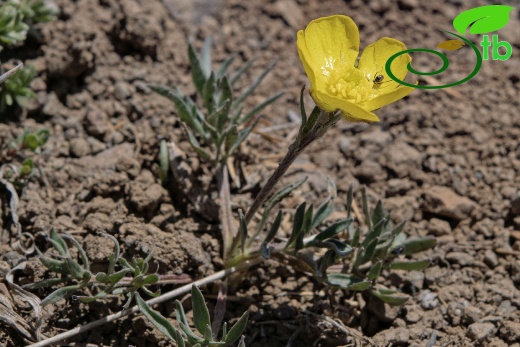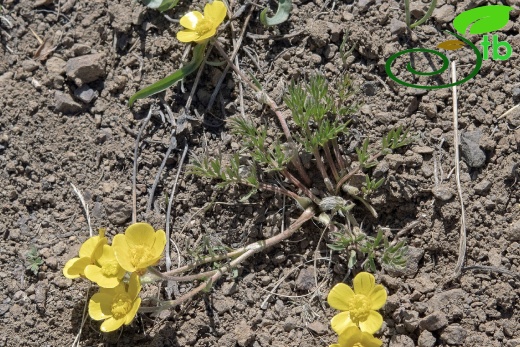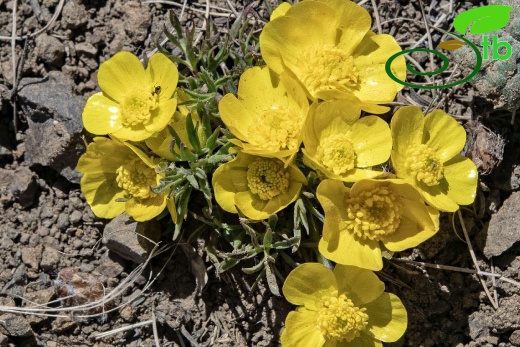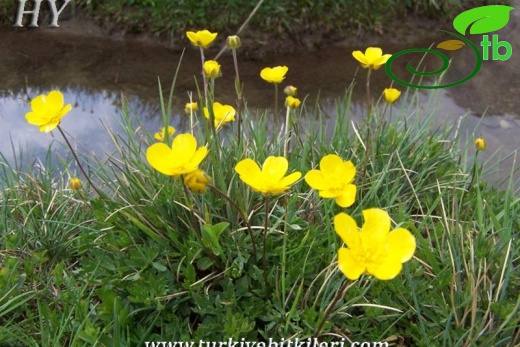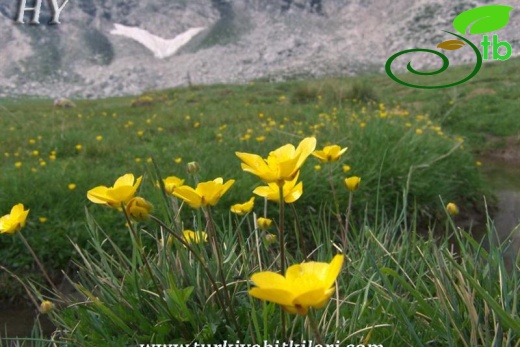Ranunculus dissectus
Ranunculus dissectus
Ssp dissectus: Kebikeç; Ssp ermenekensis: Has kebikeç; Ssp glabrescens: Köse kebikeç; Ssp huetii: Kaya kebikeçi; Ssp napellifolius: İmce kebikeç; Ssp rigidulus: Üç kebikeç; Ssp sibthorpii: Hoş kebikeç
Perennial, 5-20 cm, glabrous, pilose or villosulous. Rhizome oblique; collar strongly fibrous. Stem 1-3-flowered, erect or sometimes procumbent. Radical leaves trisect to subpinnatisect, central segment sessile or long-stalked; lamina round to broadly ovate, segments deeply dissected into toothed or entire laciniae of variable form. Upper leaves 1-3-sect into linear laciniae. Sepals spreading. Petals 8-18 mm. Achenes obovate-semicircular, 2-3 mm, compressed, glabrous, without a conspicuous nerve parallel to the margin; beak uncinate or circinate, 0,5-0,75 mm. A very polymorphic, dwarf, few-flowered species, allied to R. caucasicus and R. fenzlii, but differing in having achenes without a prominent nerve parallel to the adaxial margin. Subsp. dissectus is confined to mountain Crimea, but 5 other subspecies can be recognised in Anatolia where the complex has its centre in the North-East.
1. Flowers large, usually 3-3,5 cm across. with short lateral teeth, densely adpressed-pilose, rarely glabrescent. Stems erect, sturdy, 10-25 cm, often 1,5 mm thick) subsp. napellifolius
1. Flowers smaller, less than 3 cm across
2. Laciniae cuneate-oblong and mostly tridentate at apex; leaves usually suborbiculer in outline, villosulous like the stems. mm across. Stems sturdy.. subsp. huetii
2. Laciniae lanceolate, oblong-lanceolate or linear-lanceolate, entire or with one or more slender lateral teeth; leaves ovate or suborbicular in outline, glabrous or subpilose
3. Laciniae linear or linear-lanceolate, 1-1,5 mm broad, subentire, glabrous, very numerous; lamina ovate-orbicular, 2-3 cm long; sepals glabrescent. subsp. rigidulus
3. Laciniae lanceolate or oblong-lanceolate, mostly 1,5-2 mm broad, often with one or more lateral teeth, glabrous or subpilose; sepals hairy
4. Lamina 3-5 cm long, ovate in outline; laciniae 3-15 mm long; stem sturdy , procumbent-ascending and 2-3-flowered; rootstock thick ; flowers usually 20-27 cm across subsp. glabrescens
4. Lamina 1-3 cm long, suborbicular or ovate in outline, laciniae or teeth 3-8 mm long; stem slender , erect, 1-2-flowered; rootstock slender, usually less than 5 mm broad; flowers 15-20 mm across subsp. sibthorpii
Ssp dissectus: Differs from subsp. napellifolius Davis in its smaller flowers and from all the other Turkish subspecies by the combination or oblong or narrowly oblong-cuneate leaf lacinille with coarse lateral teeth and normally spreading-villous stems and leaves. Lamina of leaves suborbicular.
Crimea. Euxine clement.
subsp. ermenekensis: Perennial. 30-45 cm. Rhizome oblique, collar fibrous. Stems slender . erect. flexuous. 1-2-flowered. sparsely adpressed-pilose to glabrous. Lamina of radical leaves deeply dissected, suborbicular in outline. 2,5-3 cm, very sparsely pilose at base; laciniae entire, linear to linear-lanceolate, to 2,5 cm, glabrous. Flowers 23 mm across, torus white tomentose. Sepals spreading, 6-7 mm, long-villous. Petals obovate, 12-13 x 8-9 mm, yellow. Anthers oblong-linear, 1,5 mm, yellow. Achencs semi-circular, 3 mm, compressed. glabrous, without conspicuous vein parallel to the adaxial margin; beak circinnate, 0,6-0,7 mm. Fl. 6. Cedrus libani forest. 1700-1750 m.
Endemic. E. Medit. element.


